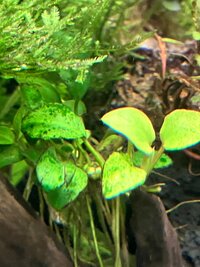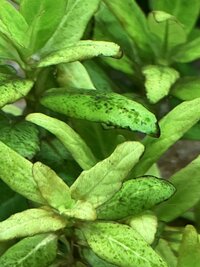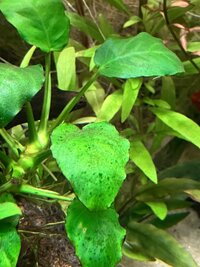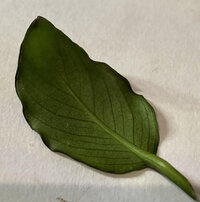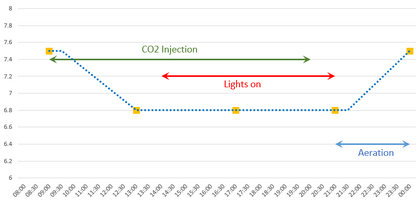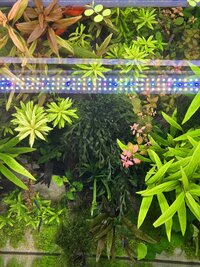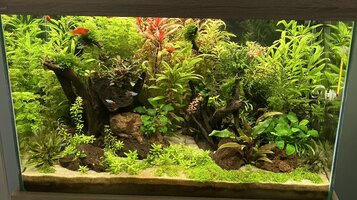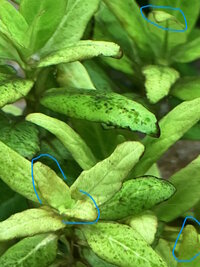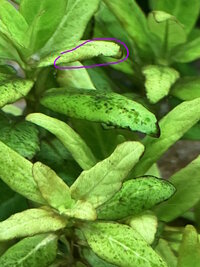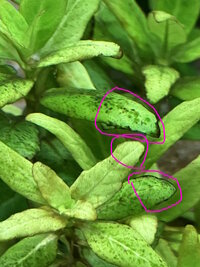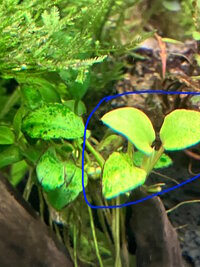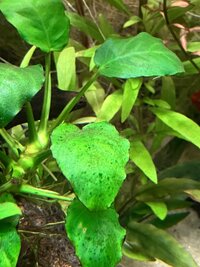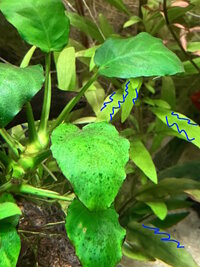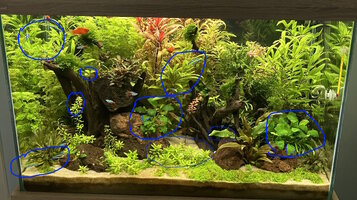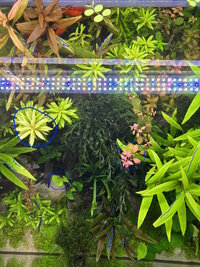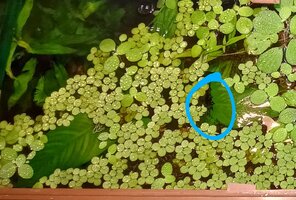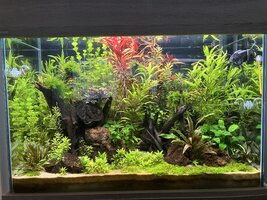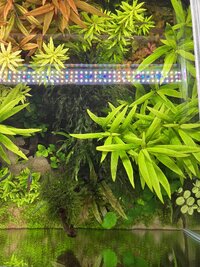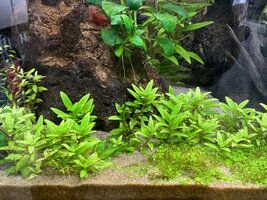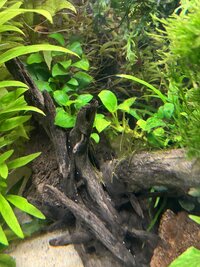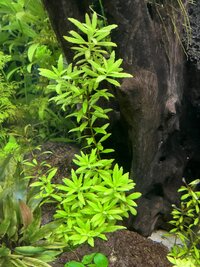Hi - I am trying to understand why some of my plants are suffering from blackened tips and edges. I recently increased my light intensity and a little bit of green spot algae has appeared - particularly on some anubias, lymnophila aromatica and (newly introduced) Staurogyne repens. This green spot algae in itself is not the main concern as its all part of find the right balance I guess. What is confusing (having trawled any number of discussions on this subject and looking at the algae guide referenced in this forum), as to why the black edges have appeared. Is doesn't appear to be BBA so there are three factors as I see it
My tank details are:
1. Size of tank. 90cm, 45cm, 60cm
2. Age of the system approximately. 6 months
3. Tap water parameters. Not known
4. Filtration. Betta 1040 with UV; includes charcoal, purigen, ceramic rings and Matrix
5. Lighting and duration. Fluval Plant 3.0 46W (3300 lum max? 6500k ) 8hrs with 30min ramp up and down; currently at 75% of the default 'planted tank' lighting profile
6. Substrate. Fluval stratum in filter bags capped with riverbed sand.
7. Co2 dosing or Non-dosing. Yes. I get stable CO2 during the photoperiod and 1.0 pH drop from the fully degassed reference
8. Fertilizers used + Ratios. TNC complete default dosing (changed a few weeks ago from default dose to 2x default dose)
9. Water change regime and composition. 30% per week
10. Plant list. Bolbitis heudelotti, Bucephalandra Theia, Anubias barteri Petite, Anubias Nana, Microsorum pteropus Trident, hygrophila Siamensis 53b, limnophila aromatica, limnophila sessiflora, alternanthera Reineckii Pink, varous mosses, assorted crypts (Undulatus Kasselman, petchii), Monte Carlo, Staurogyne repens plus Salvinia floating plants;
11. Inhabitants. 15 shrimp (amano and cherry), 7 neon tetras, 8 copper harlequins, 3 red platys, 2 neon blue dwarf gouramis, 5 red phantums, 4 Ottos (all very fat and happy!)
- the black edges are a consequence of the green spot algae on plant health
- it is algae itself (very unlikely?)
- it is an unconnected issue such as a nutrient deficiency
My tank details are:
1. Size of tank. 90cm, 45cm, 60cm
2. Age of the system approximately. 6 months
3. Tap water parameters. Not known
4. Filtration. Betta 1040 with UV; includes charcoal, purigen, ceramic rings and Matrix
5. Lighting and duration. Fluval Plant 3.0 46W (3300 lum max? 6500k ) 8hrs with 30min ramp up and down; currently at 75% of the default 'planted tank' lighting profile
6. Substrate. Fluval stratum in filter bags capped with riverbed sand.
7. Co2 dosing or Non-dosing. Yes. I get stable CO2 during the photoperiod and 1.0 pH drop from the fully degassed reference
8. Fertilizers used + Ratios. TNC complete default dosing (changed a few weeks ago from default dose to 2x default dose)
9. Water change regime and composition. 30% per week
10. Plant list. Bolbitis heudelotti, Bucephalandra Theia, Anubias barteri Petite, Anubias Nana, Microsorum pteropus Trident, hygrophila Siamensis 53b, limnophila aromatica, limnophila sessiflora, alternanthera Reineckii Pink, varous mosses, assorted crypts (Undulatus Kasselman, petchii), Monte Carlo, Staurogyne repens plus Salvinia floating plants;
11. Inhabitants. 15 shrimp (amano and cherry), 7 neon tetras, 8 copper harlequins, 3 red platys, 2 neon blue dwarf gouramis, 5 red phantums, 4 Ottos (all very fat and happy!)


